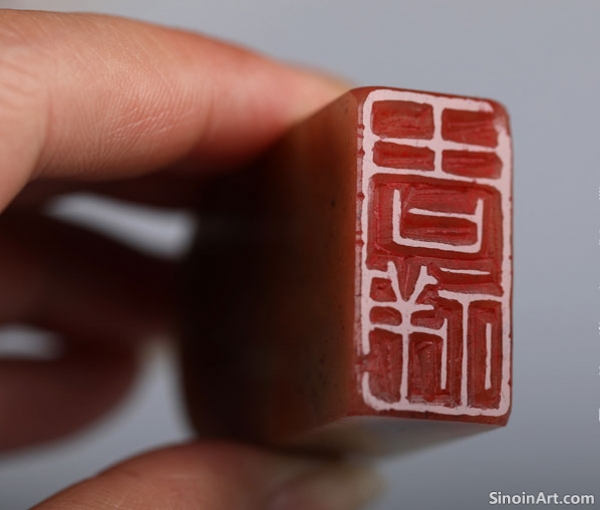The Use of Seals in Chinese Culture: Beyond Identification
|
Chinese seals, or yinzhang (印章), are much more than mere identifiers; they are integral to Chinese culture, serving a variety of functions beyond simply confirming one's identity. From official documents to artistic works, seals have a long and rich history, reflecting the social, political, and artistic values of Chinese society. The significance of the seal extends beyond its practical use. It is tied to history, culture, and artistic expression.  Historically, seals were primarily used as symbols of authority and power. Imperial seals were used to authenticate documents and decrees from the emperor, while official seals were used by government officials to confirm their positions and decisions. These seals were treated as incredibly important and were an integral part of the process of government and power. They have had a long and important place in Chinese history.  Seals are also used in business and commerce, serving as legal signatures to authenticate contracts and transactions. This function is an important aspect of commerce in China and other parts of Asia. These seals provide an official mark of approval. They often carry a significant legal function as well.  Seals also hold an important place in the world of Chinese art. Artists often use seals to sign their paintings, calligraphy, and other works. They are a mark of ownership and identity, as well as an artistic element that contributes to the overall aesthetic. They often add an artistic flair to artworks, and are more than just a signature. In addition to these practical uses, seals are also highly prized as personal objects, reflecting one’s identity, social status, and cultural background. Many people collect seals, not only for their practical purposes, but also for their artistic and cultural value. The seals are a reflection of their owner’s interests. In contemporary times, the use of seals continues to be a relevant part of Chinese culture, demonstrating their enduring importance in a rapidly changing world. They continue to be used in official, artistic, and business contexts. They remain an essential part of the cultural heritage. In essence, Chinese seals are far more than mere identifiers; they are a window into the rich and complex history of Chinese culture, reflecting its values, beliefs, and traditions. The seals are a symbol of Chinese heritage. They serve multiple functions in society and art. |
Tag : Chinese Seals, Yinzhang, Cultural Significance, Seal Use, Traditional Customs
Related information
- The Symbolism in Seals: Decoding Meaning Through Design
- Famous Seal Carvers in Chinese History: The Masters of Zhuanke
- Styles of Seal Carving: Exploring Regional and Artistic Differences
- Techniques of Chinese Seal Carving: A Hands-On Art
- Collector's Seals and Provenance
This article explores the symbolism within Chinese seal carving, focusing on the meaning of characters, imagery, composition, color, materials, and how they contribute to the artwork's message.
Discover the lives and works of famous Chinese seal carvers throughout history. Learn about the contributions of masters like Zhao Mengfu, Wen Peng, and Qi Baishi to the art of zhuanke.
This article explores the various styles of Chinese seal carving, highlighting regional and historical differences from Qin and Han dynasties to styles of the Ming and Qing, emphasizing the diversity of the art form.
Learn about the intricate techniques of Chinese seal carving. Explore the process, from design to carving, and discover different methods such as zhuwen and baiwen.
Collector’s seals play a crucial role in establishing the provenance, or history of ownership, of a work of art or a book. The history of ownership is an essential component of establishing the value of a piece.